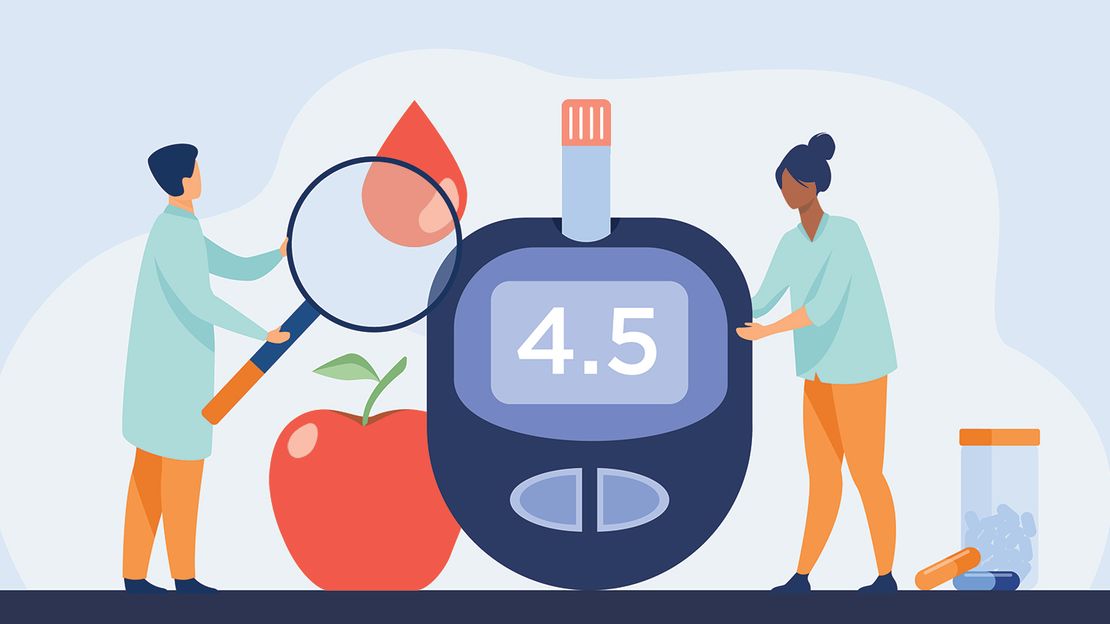~ by Richard Sgaglio
November kicks off the holiday season. With all the baked goods, large meals, and holiday traditions that center around Thanksgiving, it’s hard to be concerned about maintaining an adequate weight and healthy lifestyle. Thankfully, with November as National Diabetes Month, we can re-focus our attention on the physical, emotional and social effects that impact more than 38 million people living in the United States.
What is diabetes?
By definition, diabetes is a disease that occurs when your blood glucose, also known as blood sugar, is too high. Acting as the main source of your energy, blood glucose comes from the food that you eat. However, when your body doesn’t produce enough insulin, a hormone created by the pancreas, the glucose stays in your blood and doesn’t reach your cells where it is needed to produce fuel for the body.
Having too much glucose in your system can cause a variety of health problems. Currently there is no cure for diabetes but there are ways to manage it and stay healthy.
Types of diabetes
There are two common types of diabetes:
Type 1 diabetes: This means that your body does not produce enough insulin in your pancreas. Type 1 is usually diagnosed in children. If you have Type 1 diabetes, you have to take insulin every day.
Type 2 diabetes: This is the most common type of diabetes (90 - 95 percent are Type 2). If you have Type 2 diabetes, your body does not produce enough insulin. This form is mostly acquired later in life.
When looking for signs and symptoms of diabetes, you should consult your doctor if you have any of the following: increased thirst and urination, increased hunger, fatigue, blurred vision, numbness or tingling in the feet or hands, sores that do not heal, unexplained weight loss.
With the high chances of having Type 2 diabetes later in life, it’s good to start taking precautions now to help reduce your chances and to live a better, healthier lifestyle.
How to best prevent/manage diabetes
Although there is no cure and there are certain genetic factors that you can’t change, according to WebMd, Type 2 diabetes especially can be managed by healthy living and modifications to our diet.
Cut sugar from your diet: Although it might be tempting, it’s a good idea to resist eating sugary foods, which can have an impact on your health due to increasing blood sugar and insulin levels; studies have shown a link between the frequent consumption of sugar and the risk of diabetes.
Lose the extra pounds: Although not everyone who develops Type 2 diabetes is overweight, the vast majority are; losing even a small amount of weight can help reduce the risk of diabetes, especially if you tend to carry extra weight around your stomach.
Quit smoking: Even though it can be a hard habit to kick, smoking has been strongly linked to the risk of diabetes. By quitting smoking now, you can reduce the risk of having Type 2 diabetes later in life.
Eat a high-fiber diet: Eating plenty of fiber-filled foods is a great way to achieve good health and weight management; studies have shown that by eating high fiber foods, obese, elderly, and pre-diabetic individuals have a better chance of keeping their blood sugar and insulin levels low.
By sticking with the tips above, you can help yourself and your loved ones struggling with diabetes or help prevent it as much as possible from happening in the future.
So, with the month of November being National Diabetes Month, the American Diabetes Association encourages everyone to start with one simple step: “Commit to a healthy lifestyle change by drinking more water, making a healthy meal or just getting moving.”
If you or someone you know may be struggling with diabetes or pre-diabetes, take action today and consult with your doctor to help lead you down the path to a healthier lifestyle.
The information in the above article is not intended nor implied to be a substitute for professional medical advice, diagnosis, or treatment. Always seek the advice of your physician or other qualified health provider with any questions you may have regarding a medical condition.
